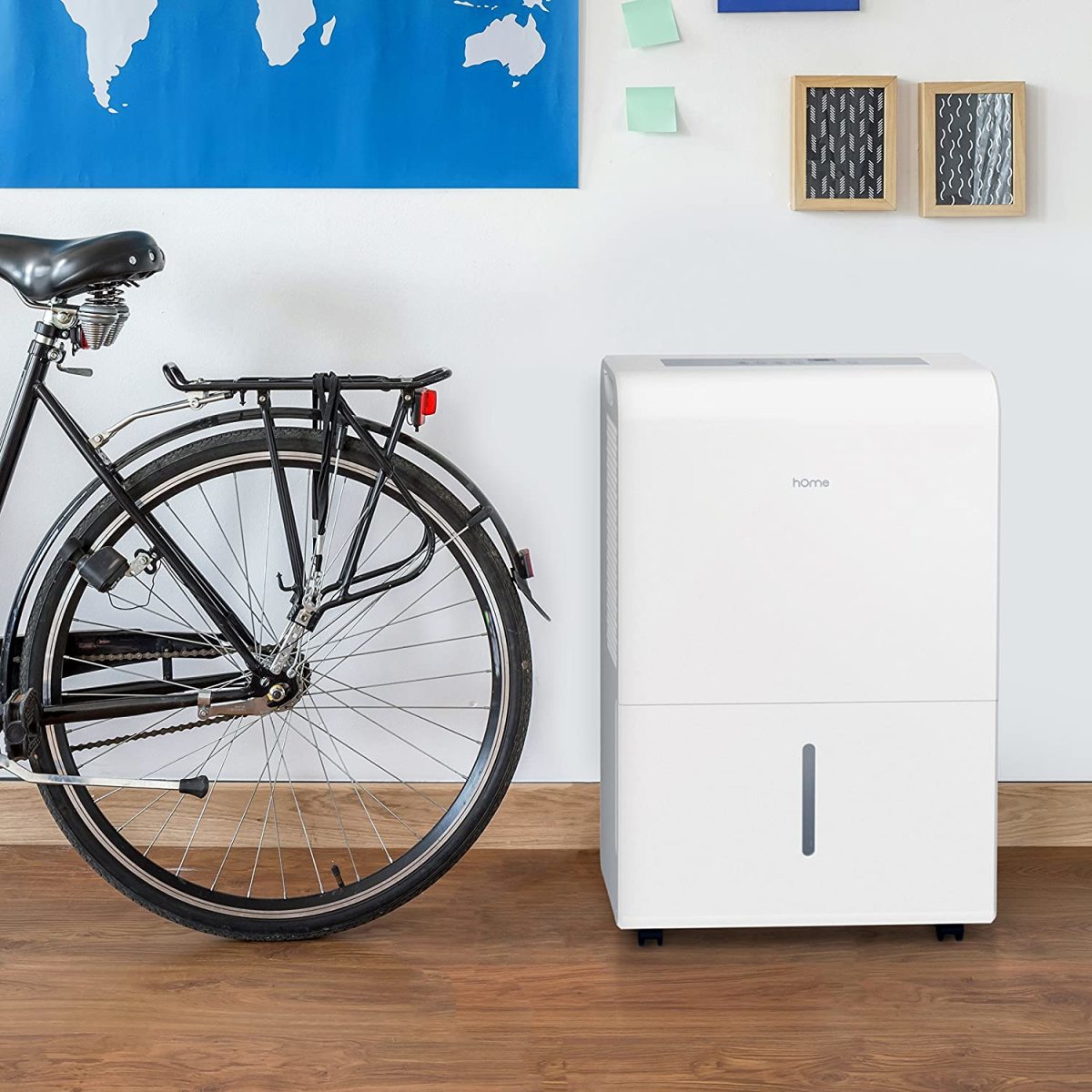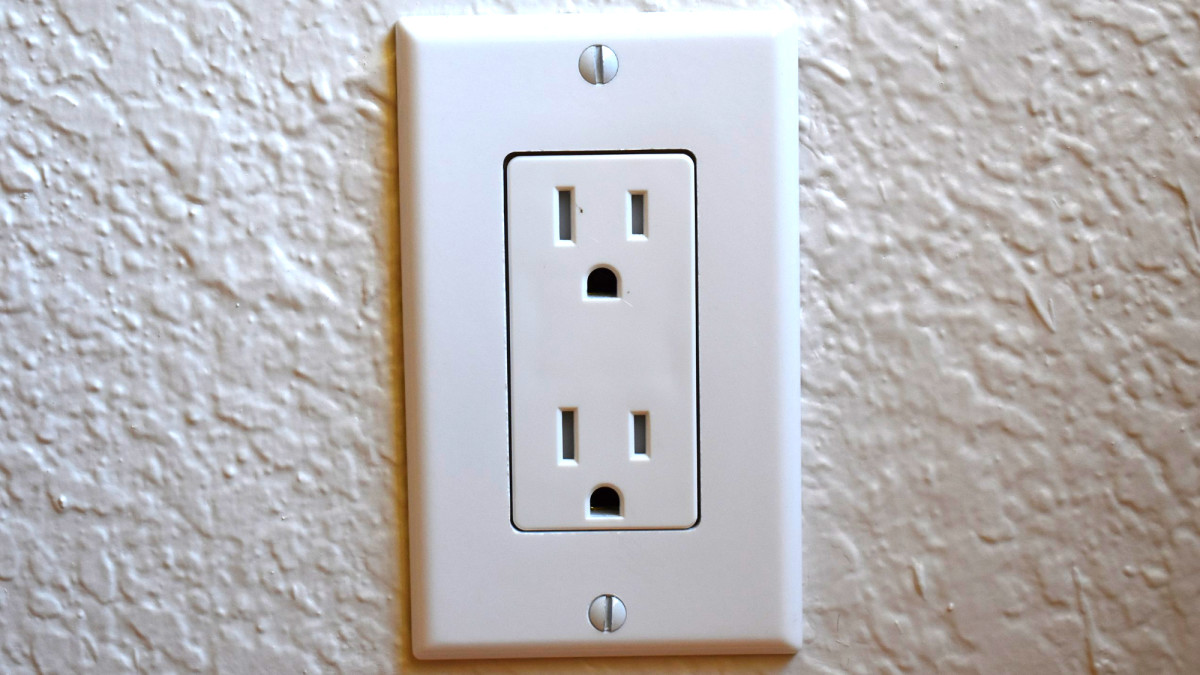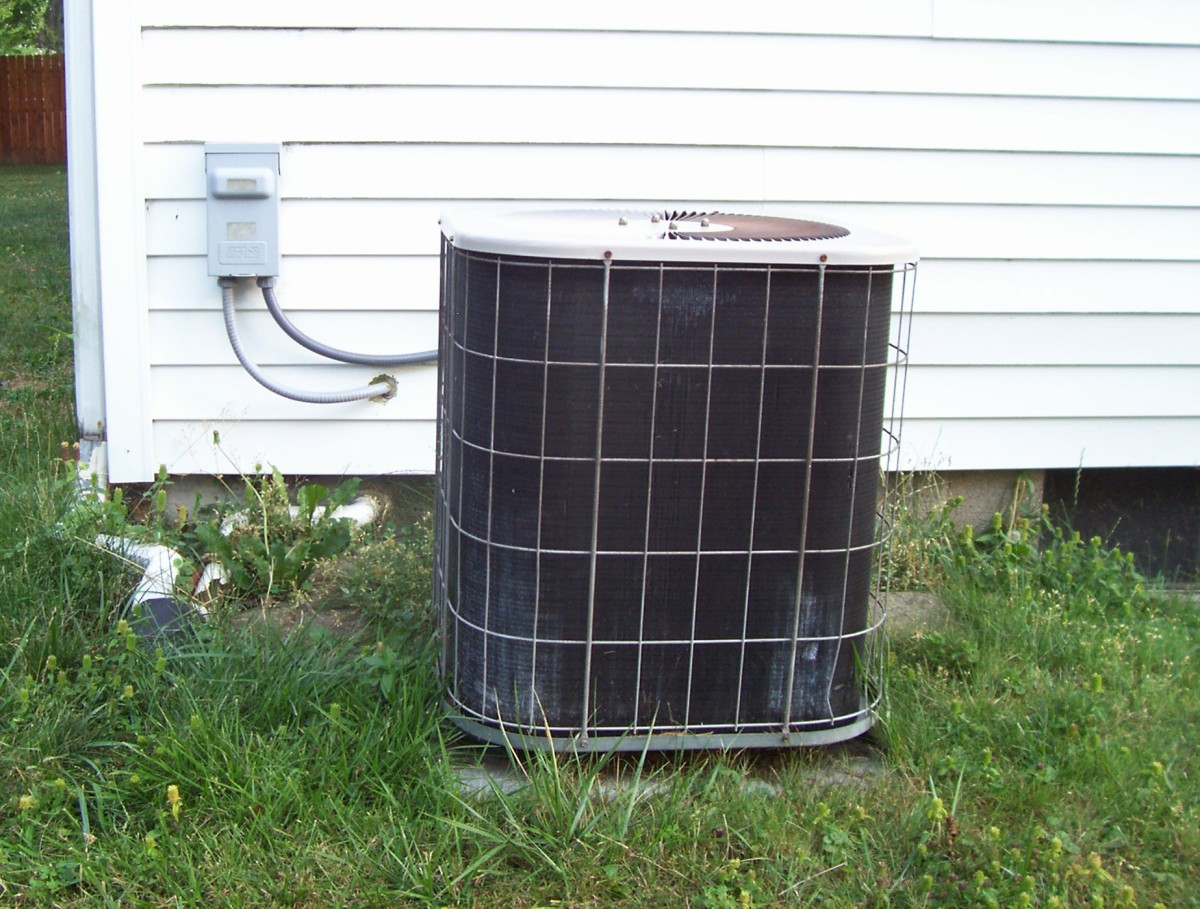The Basics of Modern Energy Efficient Ceiling Fans

It is becoming quite common to find energy efficient, and especially Energy Star, appliances on the market now-a-days. This can be attributed to the fact that most people out there are looking for ways to save on their utility bills as well as doing right by the environment. Ceiling fans are no exception to this ‘green’ awakening. Below, we will delve into the criteria that define energy efficiency (as well as Energy Star) and look at some examples of modern energy efficient ceiling fans.
Important Ceiling Fan Definitions
There are a few important definitions that you will need to be aware of before we get into what is energy efficiency in the world of ceiling fans. The first definition is cubic feet of air per minute (cfm). This is a measure of how much air that a ceiling fan pushes, and is measured per minute. The larger the number, the more wind is generated by the fan. The second important definition relates to the efficiency of the motor and fan. Cubic feet of air per minute per watt of energy (cfm/w) is a unit of measure that quantifies the total efficiency of the fan by looking at the gross amount of air circulated per minute per watt of energy used. Also, the higher this number, the more efficient the fan is.
For example, a fan with a cfm of 3000 circulates 3000 cubic feet of air per minute. A fan with a cfm/w of 90 circulates 90 cubic feet of air per minute per watt of energy used. It is important to look at both of these figures together when deciding on a fan that is appropriate for your room size and a fan that is at the level of energy efficiency that meets your standards.
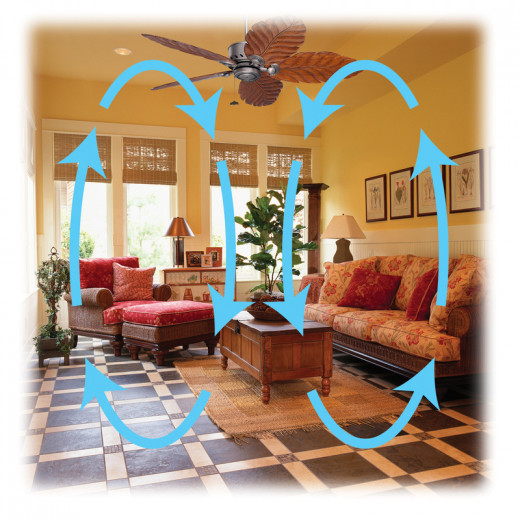
Energy Star Rating
The EPA administers the Energy Star rating, and has set forth guidelines and minimum standards of efficiency that fans have to meet to carry that rating. For a ceiling fan to have an Energy Star rating, there are a few minimums that must be met. The first relates to the cfm circulated by the fan. On low setting, a fan must circulate 1250 cfm; on medium setting, a fan must circulate 3000 cfm; on high setting, a fan must circulate 5000 cfm. The next guideline relates to the cfm/w of the fan. On low setting, a fan must have a cfm/w of 155; on medium setting, a fan must have a cfm/w of 100; on high setting, a fan must have a cfm/w of 75.
There are some criteria not relating to the circulation of air that also must be met in order to qualify as an Energy Star rated fan. First, the motor on the fan must be warrantied for at least 30 years, with at least a 1 year warranty on all the other parts. Second, the fan must have an easy way to change speeds (pull chain, remote control). And lastly, if the fan comes with a light kit, it must meet the EPA Energy Star guidelines for luminaires.

Energy Star Pros vs Cons
Now that the definitions are done, you might think that all you need to do is buy a ceiling fan with an Energy Star rating and you’re done. It isn’t quite as simple as looking for the star label. There are many ceiling fans that meet the efficiency criteria, but don’t have the label. One reason for this could be that dealing with a government agency can be tedious/expensive. Imagine the complicated testing that they would have to do to a ceiling fan to make sure it meets their criteria, and then imagine how long and how slowly the lines at the DMV move. The word ‘government’ and ‘efficiency’ should never be used in the same sentence.
It’s actually quite the opposite; there are very few fans that have the Energy Star designation. You can expect these fans to have a higher price than similarly efficient ceiling fans because of all the red tape that the company had to go through to get the rating. So keep that in mind. Are Energy Star fans efficient? Absolutely. But there really isn’t a huge selection of them on the market right now, and there are plenty of equally efficient models without the rating. All of this may change over time, but that is just how it is right now.
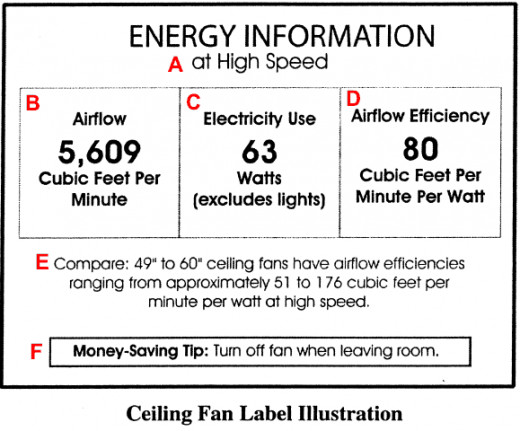
What Am I Looking For?
If you are looking at fans, you will likely see a table like the one pictured to the right. The table is an industry standard, and allows you to see the overall efficiency rating of the fan. Generally, a fan with a cfm of around 5000 on high and a cfm/w of better than 75 is an efficient fan. But the size of the fan is also an important factor. Smaller fans won’t circulate as much air as larger diameter fans, so they might not meet the Energy Star criteria. But these fans might meet and exceed the cfm/w standard. Smaller fans work well in bedrooms, dining rooms, and smaller living spaces in which a larger sweep fan is overkill.
First, you will want to choose the right size for your living space. Large living rooms and great rooms will be better served by larger sweep diameters (50 inches and larger). It would be a waste (and therefore inefficient) to place a large 60 inch sweep ceiling fan in a small 10x10 bedroom, no matter how efficient it is.
Once you have the right size, you will want to compare cfm and cfm/w data between fans you are considering. What is your budget like? Most highly efficient ceiling fans are pretty expensive. Keep the price in mind as well, and also consider how much money a more efficient (but higher initial price) fan will save you in the long run.
Lastly, don’t forget to consider the aesthetic appeal of the fan. There is a lot of really visually stunning ceiling fans on the market today from companies like Minka-Aire, Emerson, and Casa Vieja. The great thing is that a lot of these models are also highly efficient. Let’s look at some potential options below.
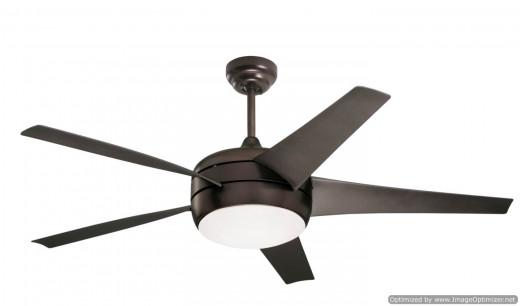
Energy Star Powerhouse
So you have decided that you want to buy a ceiling fan with the Energy Star rating with the best efficiency on the market. Which model would I suggest? Easy. The Emerson Midway Eco (pictured above). This five-bladed powerhouse cranks out the air and really saves on the energy bill. With a cfm (on high) of 6085 and a cfm/w (also on high) of an astounding 336, you will get the best in efficiency and circulation capability. The fan’s EcoMotor uses only 18 watts with the fan turned on high. That is an incredible performance. The fan has a modern appeal, and comes in a few finishes like the oil rubbed bronze, white, and brushed steel. The five blades are pitched at 29 degrees to maximize the airflow.
This ceiling fan comes with a high sticker price of $500. But with a lifetime warranty on the motor and a highly efficient motion, you will likely make back your money over the life of the fan and then some.
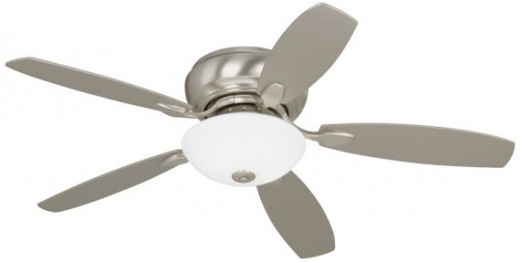
Non-Energy Star Yet Highly Efficient Compact Fan
What if you don’t want to pay the premium for an Energy Star rated ceiling fan, but still want a decent level of energy efficiency for a smaller room? The Casa Vieja Habitat fan is a great option. It is a handsome 5 bladed fan that has a blade sweep diameter of 44 inches, so it is perfect for bedrooms and smaller spaces. It still boasts a cfm/w of 83, and it only costs $180.
Recap
Hopefully, this guide will help you to understand the definitions when dealing with energy efficiency of ceiling fans. There is a lot to think about when purchasing one, and it is important to remember the items discussed in this post. What is your favorite modern ceiling fan? What about your favorite energy efficient ceiling fan? Comment below with your answer. Thanks for reading!
For more information on energy efficient ceiling fans, including ideas for where to start, click the following link
- Energy Efficient Ceiling Fan Shop
Find the perfect energy efficient ceiling fan for your living space right here!




